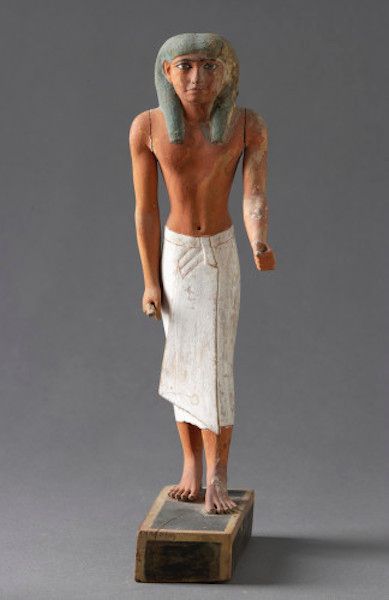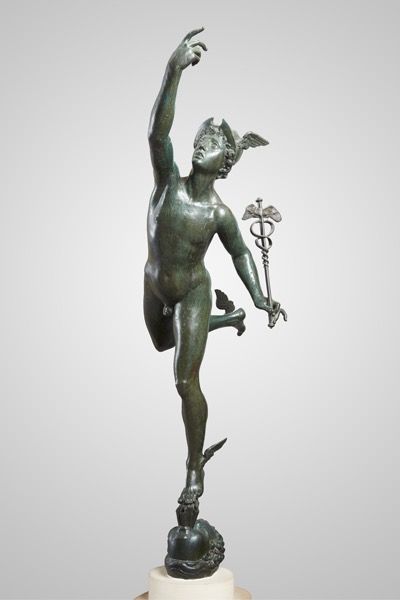The Louvre has invited choreographer and former artistic director of the Paris Opera Ballet Benjamin Millepied to curate an exhibition on the representation of the body in movement drawing on the Louvre's extensive collection.
For centuries artists around the world have sought to represent the body in motion. Paintings and sculptures are by nature static, with the exception of kinetic artworks such as Alexander Calder's mobiles and Tinguely's sculptural machines. The exhibition presents some of the solutions artists have come up with to nonetheless represent the moving body in general and the dancing body in particular. With the advent of new technologies the problem of conveying motion has not gone away. Dance photographers today face the same challenge as painters of old: is the dancer dancing or striking a pose?


Left: Walking Statue, Egypt, 1800 BC and Right: Jean de Bologne dit Giambologna, Mercury, 1574
The exhibition includes statues of walking people from antiquity, Mercury in various guises, sculptures of Terpsichore, in Greek mythology one of the nine Muses and the goddess of dance. There are paintings of floating angels and Greek vases with images of athletes and acrobats. A series of photos of a horse in motion by Eadweard Muybridge is contrasted with a painting by Théodore Géricault of the 1821 Epsom Derby, in which the position of the horses' legs, with both front and hind legs extended outwards, are wrong, as we now know. This shows how difficult it is to accurately represent the body in movement. Also included is a painting by Rubens of a village fête, which shows the villagers engaged in a dance and works by Degas and Rodin both of whom engaged with the world of dance.
A group of paintings and sculptures of Apollo chasing Daphne stands as a metaphor for the entire enterprise of representing movement. As Apollo, helped by Eros, threatens to catch up with Daphne, she calls upon her father who transforms her into a laurel tree. And so it is with the artist who seeks to convey motion and ends up with stillness.
The exhibition is small and it's more an invitation to look more closely at the representation of human and animal movement in art and to consider why some artworks fail and others succeed in representing the body in movement. By first visiting this exhibition and then strolling through the Louvre's many galleries, looking for bodies in motion, you can virtually extend the exhibition at will.
The Body in Movement. Dance and the Museum is at the Louvre, Paris until 7 July 2017.
Further reading
James E. Cutting (2002), Representing motion in a static image: constraints and parallels in art, science, and popular culture. Perception 31, 1165-93.
Marcel Duchamp, Nude Descending a Staircase No. 2 (1912).
Giacomo Balla, Dynamism of a Dog on a Leash (1912).
In chapter 3 of my book Dance, Aesthetics and the Brain I discuss the neural structures that facilitate the perception of faces, bodies and human motion. Chapter 6 discusses the perception of animacy and causality.
Links
My review of "Danser Sa Vie" at the Centre Pompidou.